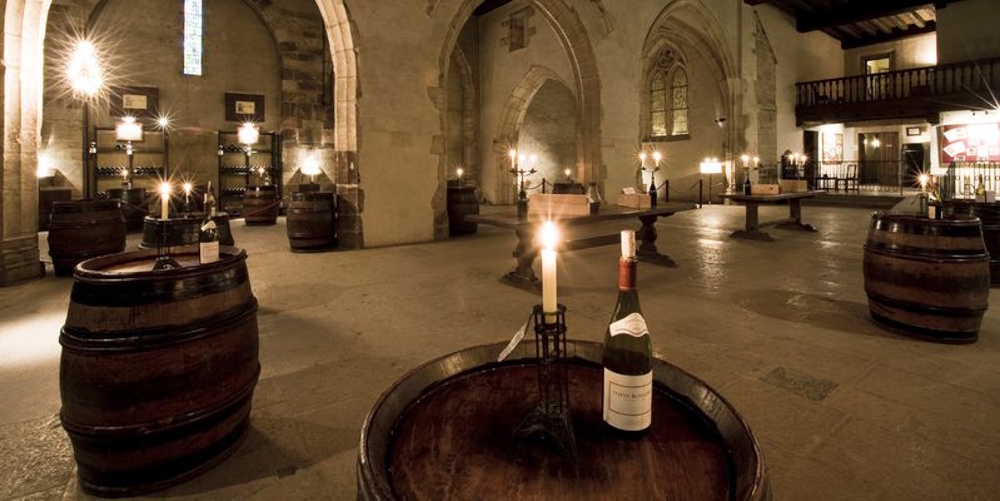There are many things that recommend a luxury barge cruise over other sorts of cruise, not least being the absence of icebergs on the canals of France. And while it does get a bit nippy come December, as we cruise only from Spring to Fall the chances of an unforeseen dip in icy waters are slim to none. But just because you won’t be forced off the boat that doesn’t mean you have to spend all your time on the boat.
Undoubtedly, wines are a big part of one’s experience of France, and a visit to a winery can be a highlight of your French canal cruise. Our main winery visits are in Sancerre, a short drive from our Southern route on the Canal de Briare, and one of our guests’ most popular excursions.

You can learn a lot about wine making on a French barge cruise
It’s quite the treat when you are able to see the grapes being brought in. With the vineyards crawling with pickers, tractors pulling trailers laden with grapes, and the fruit full to bursting, this is when the winery is in full swing. Remarkably, the harvest, or vendange, takes a very short time, normally 2-3 weeks.
If you’ve an interest in seeing the harvest your best bet is to schedule your French barge cruise between mid-September and early October. Of course, there are no guarantees that the harvest will take place during your cruise. When the grapes will be ripe for picking depends, naturally enough, on the weather. Harvesting can begin as early as the first week of September or as late as mid-October, but mid- to late-September gives you the best chance of visiting a vineyard during the vendange.
Once the grapes have been brought in the wine making begins in earnest.

The winery we visit most often for tours and tastings is Domaine Famille Bourgeois (formerly Domaine Henri Bourgeois). A top producer of Sancerre, their tour is fascinating and their tasting delicious. Ten generations of the Bourgeois family have made this winery what it is today. Their production line is unusual in that it is entirely gravity-fed: moving the grapes to the wine press, the juice to the fermentation vats, and finally the wines into barrels for aging.



Each can hold 6000KG of grapes.



The sauvignon blanc grape is particularly sensitive to handling; using a gravity feed minimizes damage to the grapes before they go into the press. As well, for certain plots and especially prized vines Domaine Bourgeois picks its grapes only by hand, which is back-breaking work.

The best vines are on a hill known as Le Mont Damné. With a full southern exposure and a steep incline—too steep for any machinery, thus picked entirely by hand—this is where the family’s original vines were planted, back when Rome brought viticulture to France as legend has it. Of course, the Bourgeois family’s vines on this hill are not quite so ancient, though many are seventy to eighty years old.
The total area of the appellation of Sancerre is about 2000 hectares (~4000 acres). The family has about 70 hectares throughout Sancerre on each of the three soil types: Kimmeridgian Marl, full of tiny sea fossils; flinty soil; and chalky clay. Each soil type imparts its own unique quality and flavor to the wine, its terroir. Many winemakers blend together grapes from the different soils but Famille Bourgeois has always kept them separate, so they can produce many different wines under the appellation Sancerre.
By French law only two varieties of grape may be used to make wines that may be called Sancerre: sauvignon blanc for white and pinot noir for red and rosé.

About 80% of wine production in Sancerre is white and 20% red and rosé. Famille Bourgeois also makes a late harvest wine when conditions are good. Syrupy and golden, it’s exceptional with foie gras, blue cheese, and desserts.

Pomace is the term for the solids left over after pressing: skins, pulp. seeds, and stems. By law wineries must give 20% to alcohol makers, for pharmaceuticals, cognac, or to be distilled into Eau de Vie de Marc—pomace brandy—France’s answer to grappa. At around 45% ABV (Alcohol By Volume), which is 90 proof, Marc is not for the faint of heart.
The remaining pomace, the majority really, is used as fertilizer, animal feed, or in the manufacture of medical alcohol.
It’s not only new wine one may taste on a barge tour in France.

If you imagine that ten generations of winemakers have amassed a deal of history, you’d be right. In the historical part of the winery is a collection of old vintages dating back to 1934. We’ve been lucky enough to have tasted wine of vintage 1984, and it was delicious. Many people don’t realize that some white wines can actually age for quite a long time, and the Sancerre wines are among those.

A recent bit of history is these special oak barrels. They were made from an ancient oak that, sadly, was hit by lightening and had to be taken down. Upon counting the rings the tree was found to be 435 years old, and was then sold at auction. Famille Bourgeois won the auction and had the barrels made. They are used in the production of three vintages of red and white, made from the family’s best vines. Fabulous wines, they are called Chêne Saint-Etienne (St. Steven’s Oak).
Of course we have many wines on board other than Sancerre, but Famille Bourgeois is such a great winery we thought we’d share it with you.
In future posts we’ll explore other wines we serve on our French luxury cruises.
In sum, whether your taste runs to red, white, or rosé, to Loire, Burgundy, or Bordeaux, or to wines from farther afield, we can promise you a delightful oenological experience during a French canal cruise aboard your Gallic home from home, Barge Meanderer.

